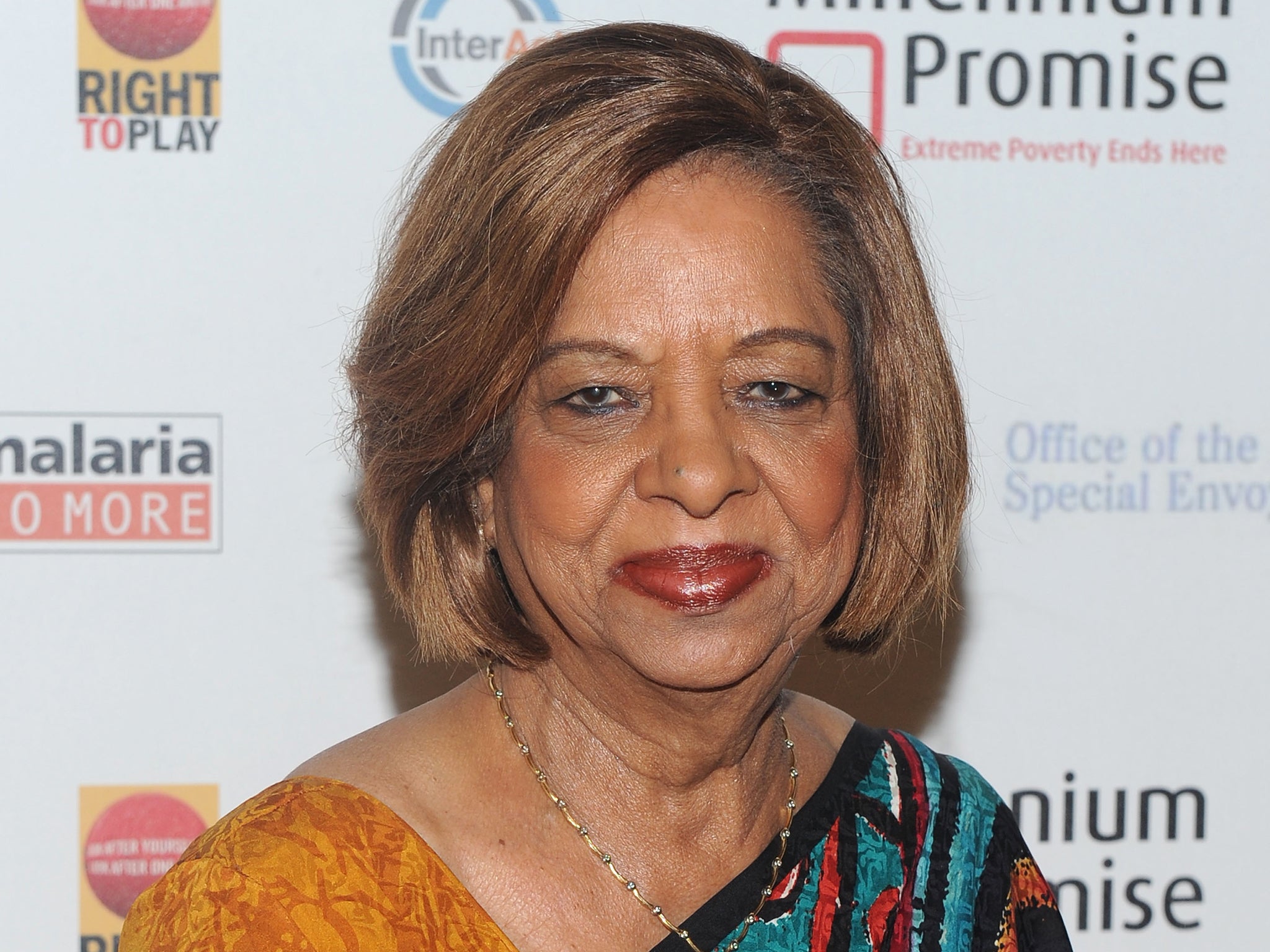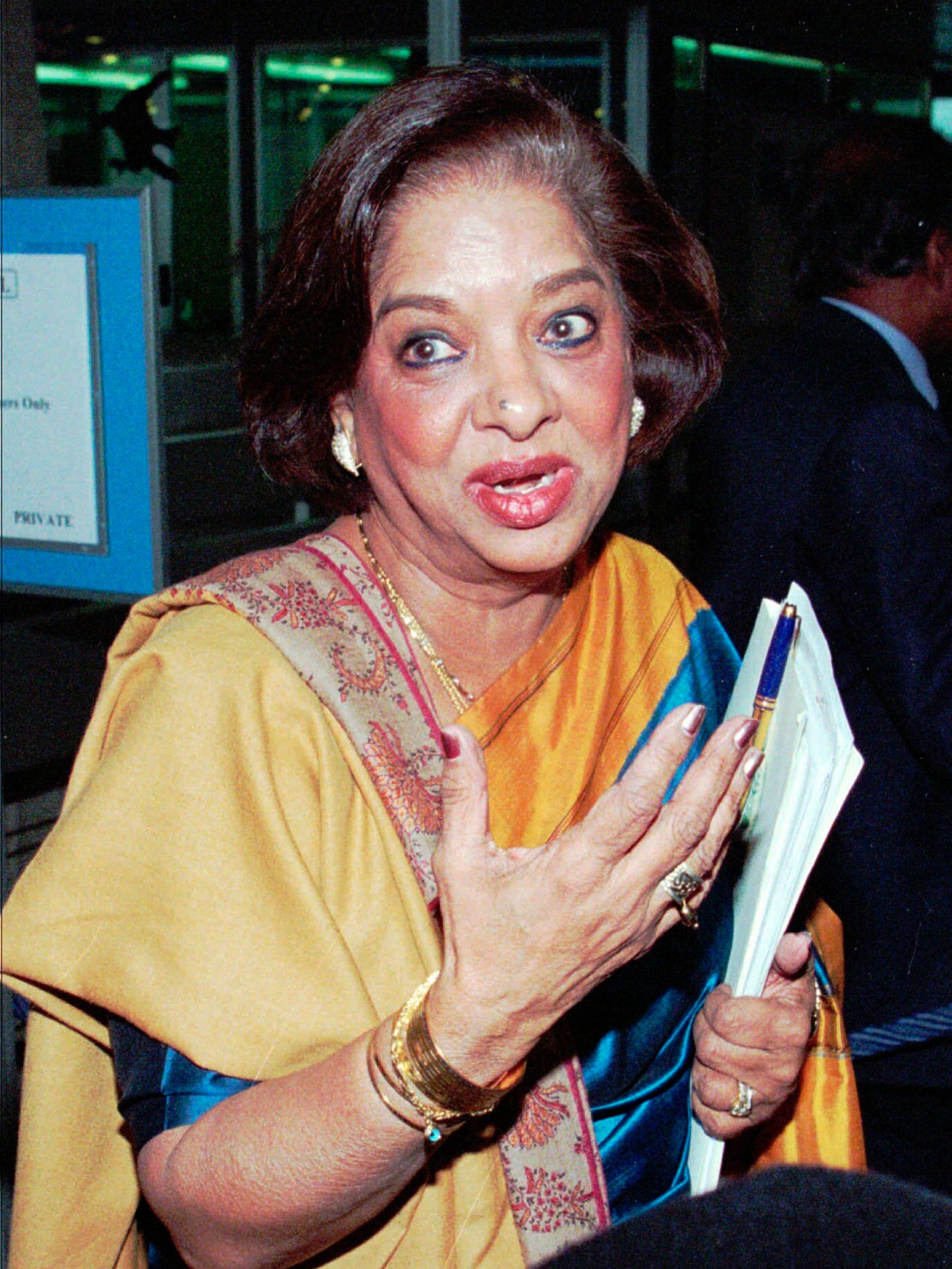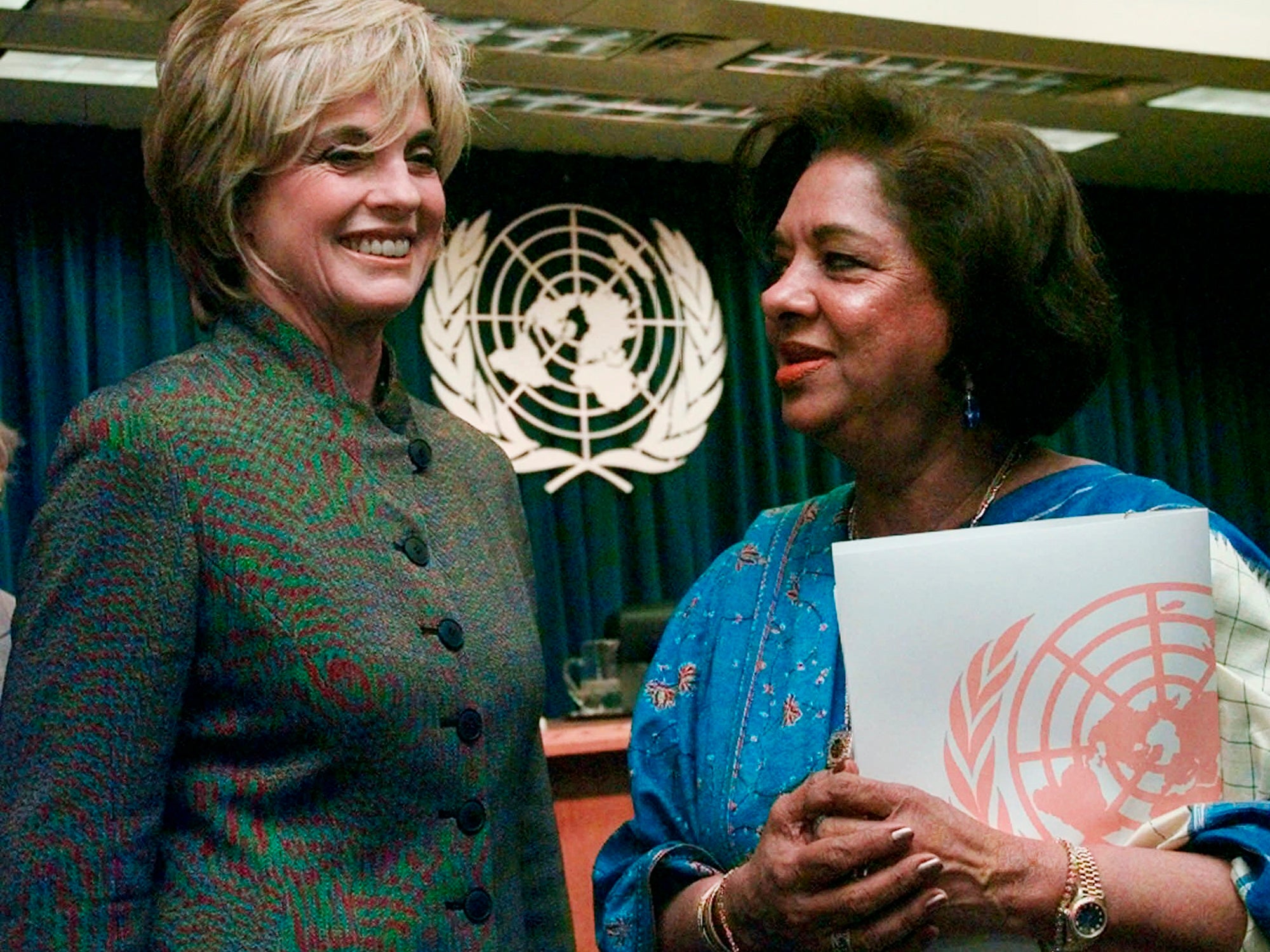Nafis Sadik: UN activist who championed women’s reproductive rights
Driven by her mantra that ‘Women being harmed is our business’, the Pakistani doctor’s campaigning angered the Vatican and brought death threats from Muslim fundamentalists

Nafis Sadik, an obstetrician-gynaecologist who in 1987 became the first woman to direct a United Nations agency – the UN Population Fund – and was widely regarded as one of the most effective champions of women's reproductive rights globally, has died aged 92.
Sadik, whose maternal grandmother died in childbirth, spent her early career as a medical corps officer in Pakistan’s armed forces and with the country’s family-planning programme. She was horrified by her years encountering women living in squalor and giving birth to as many as 15 children, often endangering their own lives. When she joined the fledgling UN Population Fund in 1971, she was tasked with helping poor women all over the world gain access to contraception and healthcare educational materials.
She spent decades confronting government leaders about the importance of elevating the status of women more generally, through access to education, jobs and greater rights.
UN secretary-general Javier Pérez de Cuéllar named Sadik executive director of the Population Fund in 1987. She led the agency – with a staff of around 800 and a budget of about $300m (£255m) – for the next 13 years amid a period of surging population growth. The agency predicted in 1990 that three new lives were being added to the planet every second.
The watershed moment of her career came in 1994 when she directed the International Conference on Population and Development in Cairo, a UN-sponsored summit to bring together 20,000 global leaders and others to discuss the threat of overpopulation.
She spoke of the urgent need to empower women – a sharp departure from earlier population-control efforts that saw nations imposing quotas on birthrates and in some cases, as in China, severe punishments for those who disobeyed. Sadik said those actions were a violation of women’s rights.
To her, decades of research had shown that if given the tools to regulate pregnancy, women would automatically reduce the birthrate.
She elaborated at the time to The Washington Post: “This conference is about choices and responsibilities – for the individual, the community, the nation and the world. Its aim is to widen our freedom of choice – choice in the matter of family size, choice in population policy and programmes, choice in development philosophy and practice.”
She said she met Pope John Paul II in a private audience at the Vatican months before the Cairo conference, in the hope he would reverse the Holy See’s ban on contraception, but made no progress and was essentially ushered out quickly. “He was angry about the approach we were taking,” she told journalists Carl Bernstein and Marco Politi in their 1996 papal biography, His Holiness. “Why had we taken this new approach to individual rights? And I said, ‘What other kinds of rights are there?’”
The pontiff publicly lambasted the conference as “a United Nations plan to destroy the family”.

During the conference, Sadik clashed repeatedly with Vatican representatives over what they considered hidden references to abortion access and endorsement of the procedure. She tried to downplay the tension by saying the conference did not declare a fundamental right to abortion – only a desire to protect women from illegal and unsafe procedures.
Sadik, a devout Muslim, endured death threats from Muslim fundamentalists who feared she was doing the bidding of the US to bring Western mores into their bedrooms. UN security experts warned her that they feared for her life in Cairo, but her response, according to colleague Richard Snyder, was: “If they kill me, then I’ll be a martyr for the cause, and it would undo everything that they want. Either way, I don’t think I can lose this one!”
Sadik insisted on adding other topics to the platform for debate, issues rarely discussed at an international conference filled with diplomats: rape, incest, and female genital mutilation.
UN staffer Stirling Scruggs recalled the reaction: “Nafis brought [FGM] to the forefront, and she brought it in a vigorous way. A lot of people said, ‘That’s cultural, it’s none of your business.’ And she said, ‘Women being harmed is our business.’”
By the end of the week-long conference, 179 nations had signed a plan of action to address population and development for the next 20 years – by making family-planning services widely available as well as taking measures to reduce disease and poverty, broaden educational opportunities and start to consider environmentally sustainable economic development.
Sadik said she saw a surge of developing countries with UN-backed family-planning programmes during her tenure, but she was disappointed that more nations had not kept the commitments they made at the Cairo conference.

In 1996, The Times ranked Sadik – who appeared a year earlier in Beijing with first lady Hillary Clinton at the World Conference on Women – as one of the world’s 100 most powerful women. The newspaper called her a “forthright” leader on “policy on improving the status of women in the developing countries while fighting to contain the population explosion”.
Sadik was born Iffat Nafis Shoaib in Jaunpur, in British-ruled India, on 18 August 1929, and grew up in Calcutta (now Kolkata) and then Karachi, where her father became a government finance officer after partition in 1947; he later was Pakistan’s finance minister and a vice president of the World Bank in Washington.
As a young woman, Sadik excelled in science studies, playing Indian classical music and badminton. She also played tournament bridge.
She married Azhar Sadik, a Pakistani army officer, at a ceremony held in Washington in 1954 and completed her residency in obstetrics at City Hospital in Baltimore. She soon returned to Pakistan, accompanying her husband to Abbottabad and creating her own position treating the wives of soldiers. She then expanded her services to include women in rural villages, often driving alone in an army Jeep along rugged mountain roads.
Most problematic, she said, was women constantly getting pregnant until they gave birth to a boy – to please husbands and in-laws. “It started to come home to me that these poor women really had no control over their lives,” she told the AP, adding that she bought condoms to pass out to women and spoke to the village men about family planning in what she described as shocking candour for a woman during those years. She once grew so frustrated, Sadik recalled, she ordered the men in one community to sign pledges they would give their wives a break from constant pregnancy.
After studying public health at Johns Hopkins University in the mid-1960s, she was tapped to oversee Pakistan’s five-year family-planning programme before joining the UN Population Fund as an adviser in 1971. She was already developing a reputation as a conspicuous voice on population control, telling The New York Times the next year, “I say with certainty that regardless of country or culture, no woman in the world wants a baby every year.”
Her husband died in 2011, and her daughter Mehreen Sadik died in 2015. Survivors include four children, a sister, 10 grandchildren, and four great-grandchildren.
After stepping down as leader of the Population Fund, Sadik served several years as the UN secretary general’s special envoy for HIV/Aids in Asia and the Pacific. Gro Harlem Brundtland, former prime minister of Norway and past director general of the World Health Organisation, noted: “Nafis Sadik was an exceptional agent of change. She had the passion, stamina and courage to make a real difference for humanity.”
Nafis Sadik, activist and former executive director of the United Nations Population Fund, born 18 August 1929, died 14 August 2022
Cathleen Miller wrote the 2013 biography ‘Champion of Choice: The Life & Legacy of Women’s Advocate Nafis Sadik’
© The Washington Post

